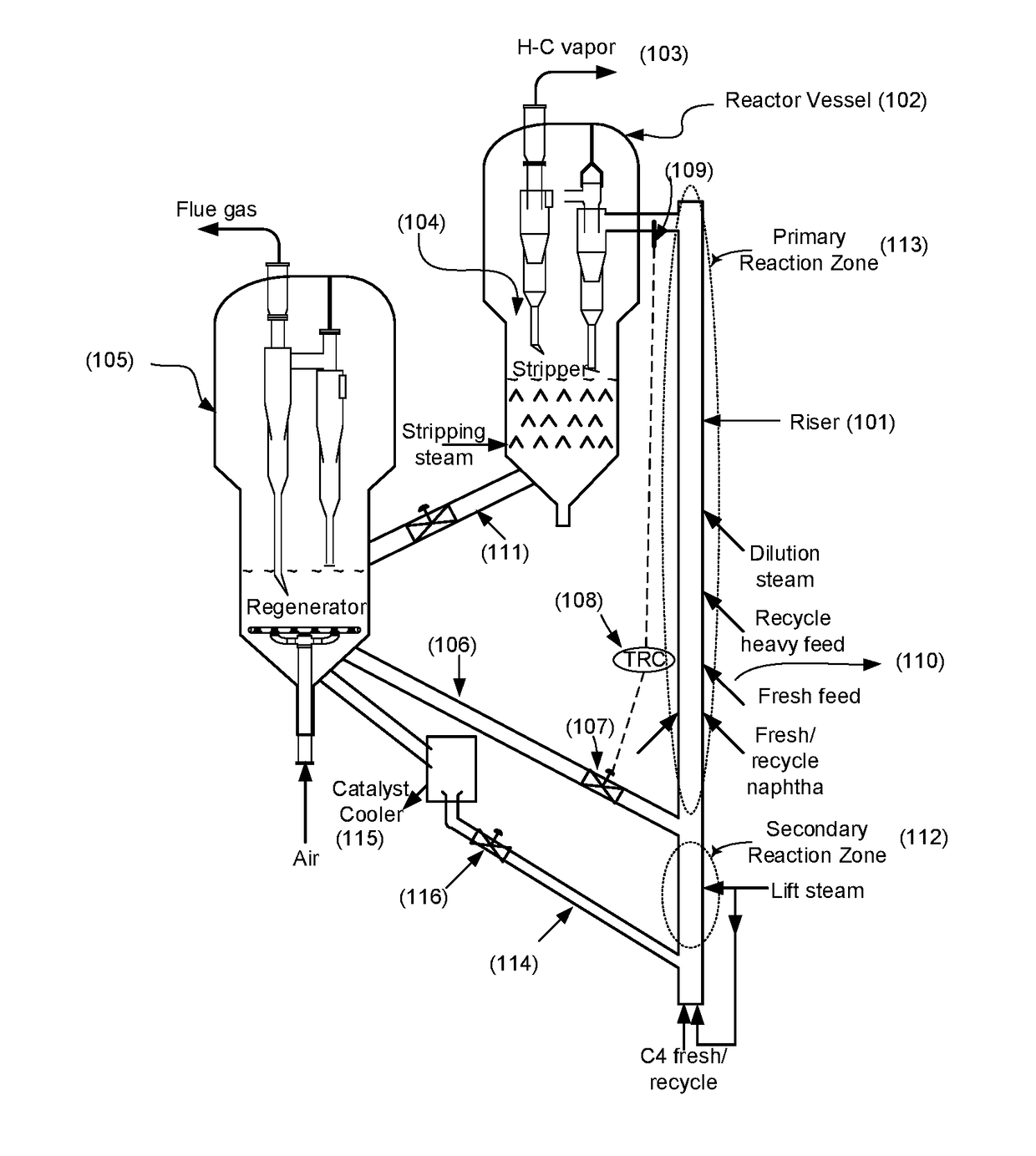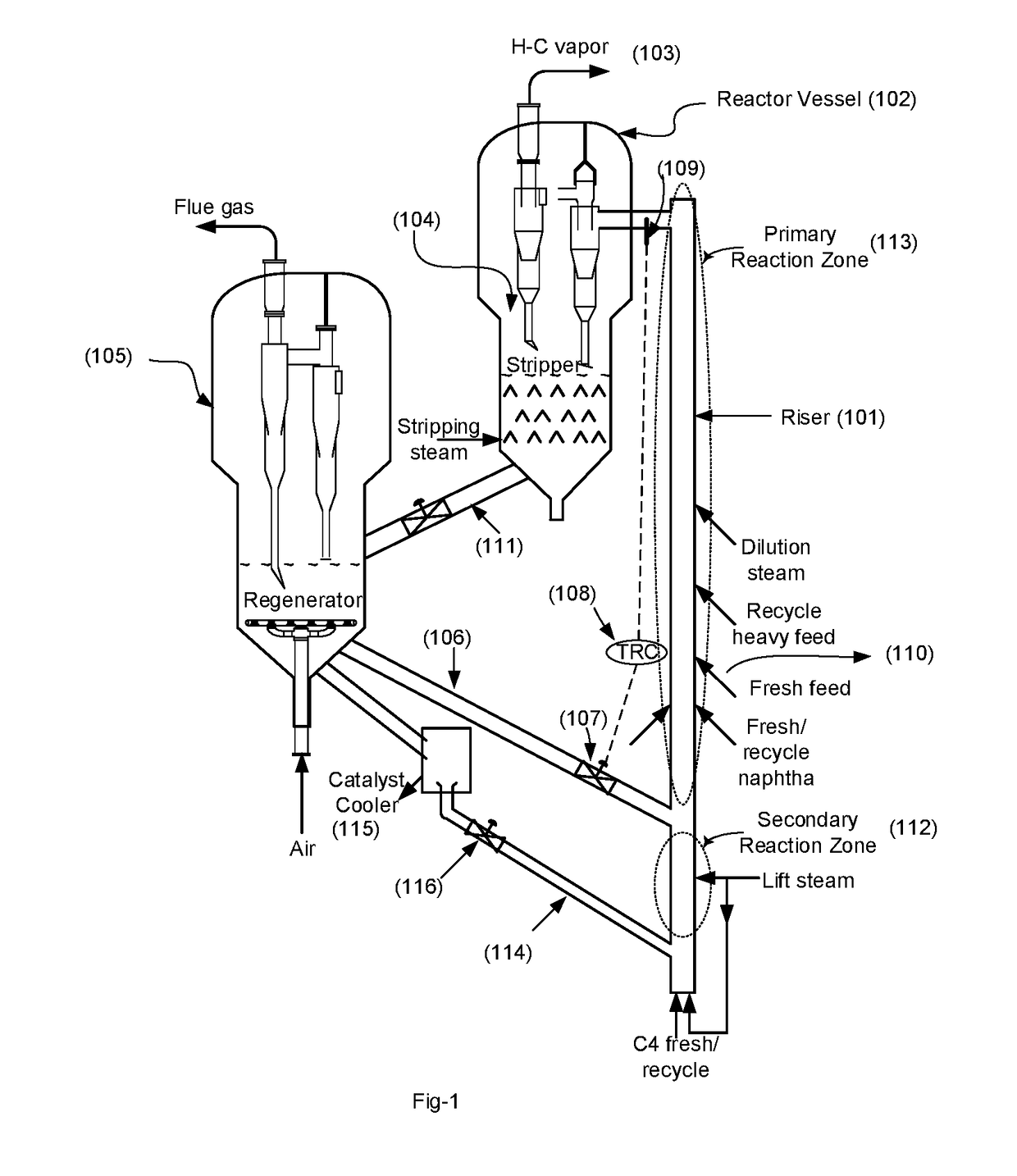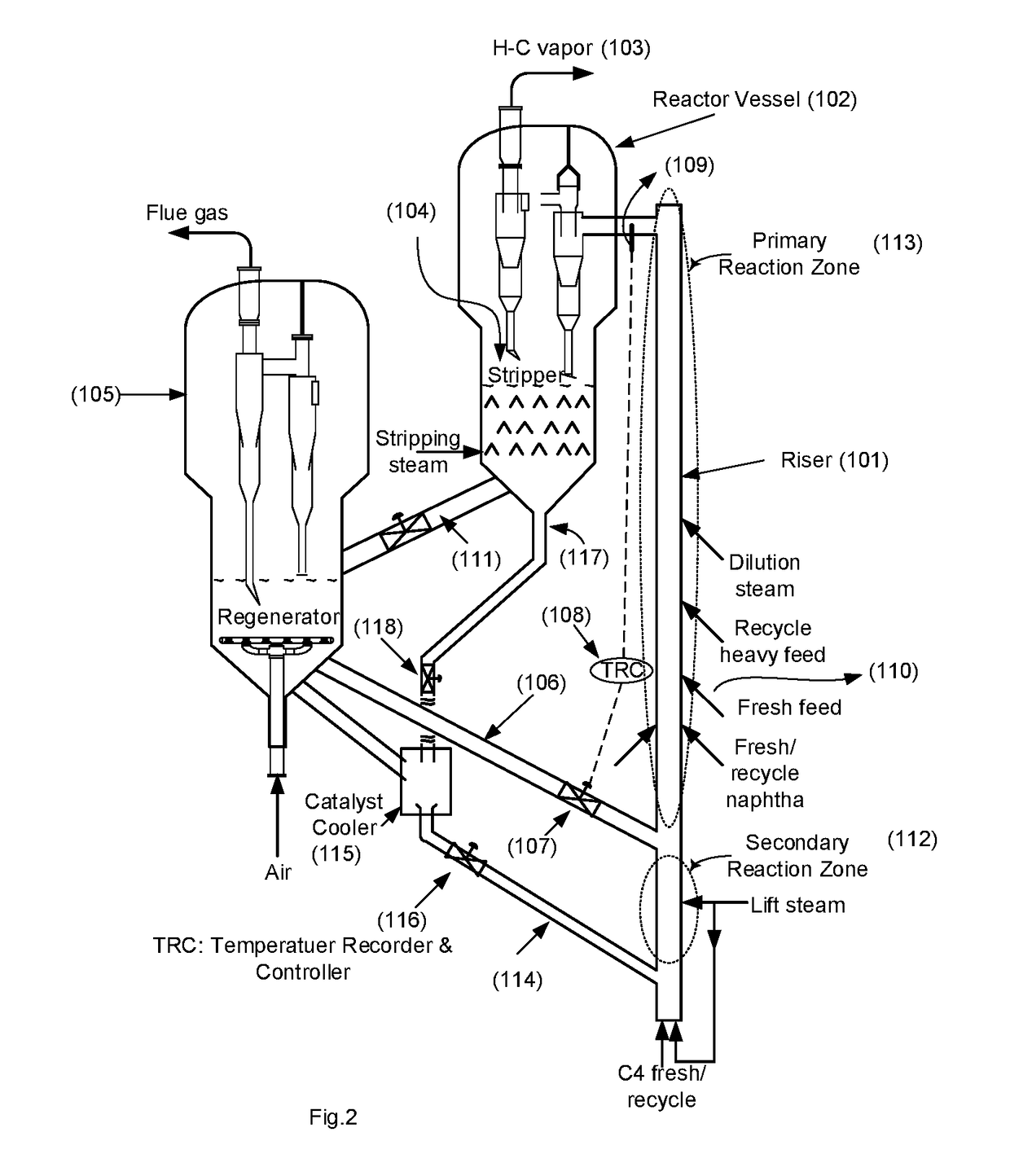Production of propylene in a fluid catalytic cracking unit
a technology of propylene and hydrocarbon feedstock, which is applied in the direction of hydrocarbon preparation catalysts, hydrocarbon oil treatment products, organic chemistry, etc., can solve the problems of not teaching any method, unable to meet the incremental demand of propylene, and conventional steam cracking units, etc., to achieve the effect of maximizing the propylene yield
- Summary
- Abstract
- Description
- Claims
- Application Information
AI Technical Summary
Benefits of technology
Problems solved by technology
Method used
Image
Examples
example
[0062]This example demonstrates the improvement in propylene yield in FCCU obtained through cracking of the product C4 stream generated out of cracking of residue feed in the riser using a residue feed having 4.4 wt % conradson carbon residue (CCR) and 941 kg / m3 density. The example given in this section is for illustration purpose only and don't construe to the claims as mentioned in subsequent section.
[0063]The data shown in this example have been generated through preliminary engineering calculations based on experimental data from micro—reactor and pilot plant. Base case data is at a reaction temperature of 580° C. and without any C4 cracking. The catalyst used is a mixture of FCC catalyst having average particle size of 80 microns based on USY zeolite and an additive based on pentasil zeolite having silica to alumina molar ratio of 30. The catalyst was hydrothermally deactivated at 810° C. for 5 hrs. The composition of C4 stream used in the study is given in Table-I.
TABLE IComp...
PUM
| Property | Measurement | Unit |
|---|---|---|
| temperature | aaaaa | aaaaa |
| temperature | aaaaa | aaaaa |
| temperature | aaaaa | aaaaa |
Abstract
Description
Claims
Application Information
 Login to View More
Login to View More - R&D
- Intellectual Property
- Life Sciences
- Materials
- Tech Scout
- Unparalleled Data Quality
- Higher Quality Content
- 60% Fewer Hallucinations
Browse by: Latest US Patents, China's latest patents, Technical Efficacy Thesaurus, Application Domain, Technology Topic, Popular Technical Reports.
© 2025 PatSnap. All rights reserved.Legal|Privacy policy|Modern Slavery Act Transparency Statement|Sitemap|About US| Contact US: help@patsnap.com



